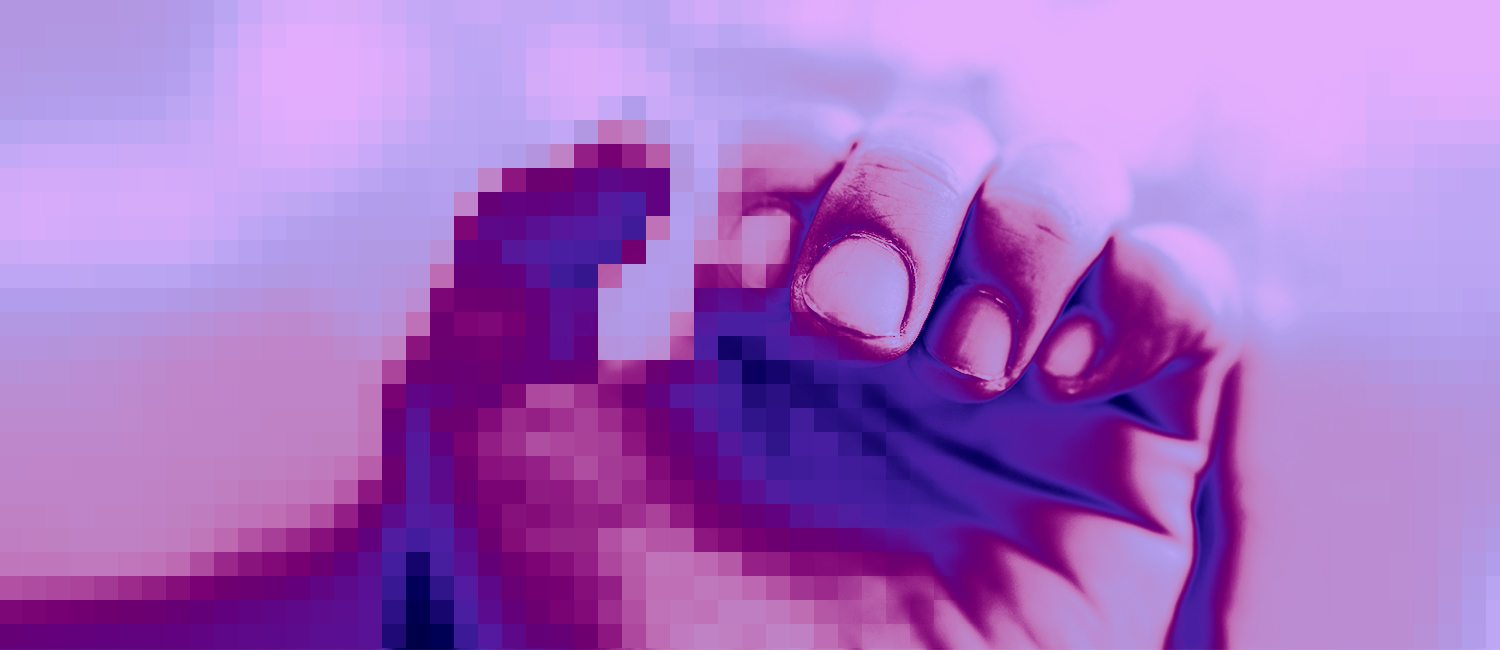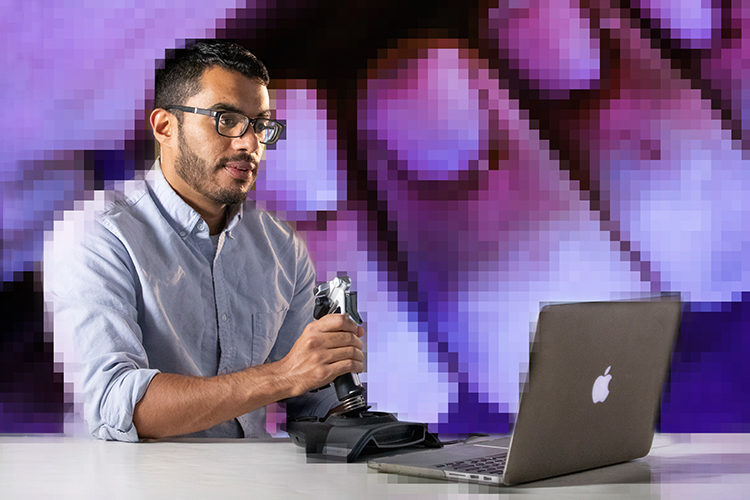
Can a computer game help alleviate anxiety?
Mosquito bites. Poison ivy rashes. A loose hair tickling the back of your neck. There are moments in life when the urge to scratch an itch seems unbearable. But for some people with obsessive-compulsive or anxiety-related disorders, life is filled with these urges, regardless of any physical stimuli. They are driven to unconsciously pick at their skin, even to the point of scarring it.
UWM researcher Abel Mathew believes there may be a way to train anxious brains to break this habit. And, somewhat surprisingly, it involves a computer screen and a joystick.
Mathew, a doctoral student in clinical psychology, led a recent experiment that invited people with skin-picking disorders to play a simple computer game. As a screen flashed through a series of images, participants were told to either approach or avoid it. They did so by pulling a joystick toward them when they saw a picture with a blue border or pushing the joystick away when the border was yellow.

What they didn’t know, as they made various images zoom in and out on their screen for 30 minutes, was that they were being trained. Some participants received color cues to approach images that included irregular skin. Others were prompted to avoid them, while a third control group got a mix of both.
“As expected, those who received the main avoidance training,” Mathew says, “showed lower urges to pick their skin, while those in the comparison approach training group had higher urges. This computerized avoidance training successfully reduced urges to pick without any face-to-face therapeutic intervention.”
Although follow-up surveys sent out two weeks after training showed these behavioral changes didn’t stick, fostering a change in even short-term behavior through a computerized task is promising. “The evidence for useful computerized trainings in anxiety-related disorders is very mixed right now,” Mathew says. “What we’re trying to do is get more information and consistent results.”
Working with advisor Hanjoo Lee, an associate professor of psychology, Mathew is recruiting a larger group of people to repeat the study and look for similar results. They are also turning to brain imaging to track what happens in the regulatory center of the brain as people go through their approach or avoidance training.
Mathew envisions a future where technology can be used in conjunction with therapy to lower the number of sessions people need, as well as their cost of care. He thinks it could be particularly useful for people who lack access to mental health providers due to financial or geographic circumstances.